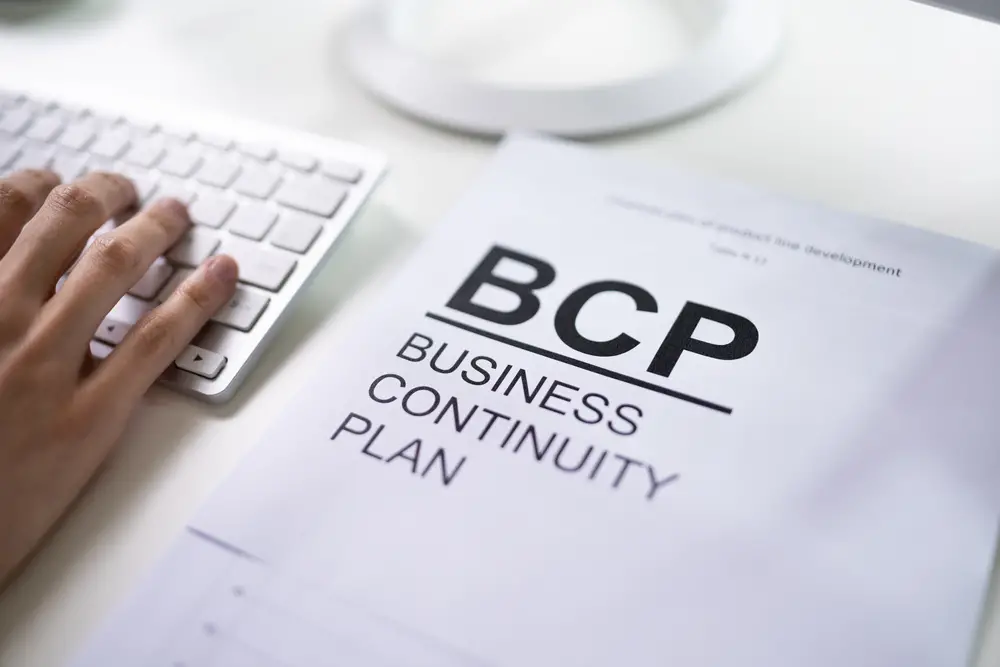Testing a business continuity plan (BCP) is a crucial step in ensuring the organization’s preparedness and resilience in the face of potential disruptions. With the increasing frequency and impact of disruptive events, businesses must have a robust BCP in place.
However, simply having a plan is not enough; it must be regularly tested to identify any weaknesses or gaps that may compromise its effectiveness.
In this discussion, we will explore the importance of BCP testing, the different types of testing methods, the frequency of testing, the challenges organizations may face, and tips for conducting effective BCP tests.
By delving into these aspects, we will gain valuable insights into how organizations can better assess and enhance their BCPs, ultimately ensuring their ability to withstand and recover from disruptive events.
Importance of BCP Testing
The importance of testing a business continuity plan (BCP) cannot be overstated. It is crucial to regularly test the plan to ensure its effectiveness and identify any weaknesses or gaps that need to be addressed.
This can be done through various methods such as tabletop exercises, plan reviews, and simulations.
Additionally, integrating the BCP with a Business Impact Analysis (BIA) and testing vendors’ continuity plans are essential for a comprehensive and coordinated response during a crisis.
Test Frequency and Methods
Regular testing of a business continuity plan (BCP) is crucial to ensure its effectiveness and minimize the impact of disruptive events, making it an essential practice for organizations of all sizes and complexities.
The frequency of testing should be aligned with the organization’s size, complexity, and any changes in processes or systems. Guidelines recommend reviewing emergency preparedness plans annually, with higher-risk scenarios tested more frequently.
Different testing methods, such as tabletop exercises, limited-scale simulations, and full-scale exercises, should be incorporated to determine the usability and effectiveness of the BCP.
By conducting regular tests, organizations can identify any gaps in their plans, improve crisis management, meet compliance requirements, and reduce recovery time and cost.
Test findings provide valuable insights for refining and enhancing the business continuity plan.
Integration With BIA and Vendors
Integrating a business continuity plan (BCP) with a Business Impact Analysis (BIA) and collaboration with vendors is essential for ensuring a comprehensive and cohesive approach to BCP testing.
By integrating these elements, organizations can validate the effectiveness of their recovery strategies, timeframes, and vendor collaboration.
To achieve successful integration and testing, the following steps should be considered:
- Understand the importance of BCP testing in validating recoverability, timeframes, and vendor collaboration.
- Use the testing schedule strategically to prioritize critical processes and systems identified in the BIA.
- Collaborate with critical vendor partners to strengthen the BCP through accurate and usable testing.
- Document testing results to incorporate actionable findings, improve the BCP, and strengthen response processes.
Types of BCP Testing
When it comes to testing a business continuity plan (BCP), different types of exercises can be conducted.
Table-top exercises involve reviewing the roles defined in the BCP and discussing responses during a simulated adverse event.
Plan reviews focus on evaluating the reasonableness of plans and procedures.
Full simulations simulate the complete recovery of business processes using all available resources.
These different types of BCP testing methods help ensure the usability and effectiveness of the plan, as well as the understanding of responsibilities by personnel.

Table-Top Exercises
A table-top exercise is a group exercise designed to assess the crisis team’s response to specific disaster situations. It allows the team to test their knowledge, skills, and decision-making abilities in a controlled environment.
During a table-top exercise, participants are presented with hypothetical scenarios related to the business continuity plan (BCP) and are required to discuss and determine the appropriate response.
Key features of a table-top exercise include:
- Experienced User Participants: Involves essential individuals in planning actions to address BC disruption.
- Multi-Site and Multi-Day Strategy: Implements a strategy involving teams working from home or mobile recovery units.
- Full-Scale Simulation: Conducts a comprehensive simulation of a major disaster scenario.
- Post-Disaster ReviewPost-Disaster Reviewfectiveness of the BCP after a real disaster occurs.
Plan Reviews
To further evaluate the effectiveness of the business continuity plan (BCP), plan reviews serve as a crucial step in auditing the plan and identifying areas for improvement while involving key stakeholders and management.
These reviews provide an opportunity to assess the plan’s details, ensuring that it aligns with the organization’s evolving needs and circumstances. By involving management and department heads in plan reviews, missing components or areas requiring revision can be identified.
Additionally, plan reviews play a significant role in onboarding new employees by familiarizing them with the current business continuity plan. It is also essential to update contact information for the BCP team during these reviews.
Full Simulations
Full simulations serve as a comprehensive testing method for business continuity plans, allowing organizations to simulate the full recovery of business processes using all available resources.
This type of testing provides a realistic scenario in which the organization can assess the effectiveness of its comprehensive plan. By conducting a full simulation, you can gain valuable insights into the strengths and weaknesses of your business continuity plan.

Here are some benefits of conducting a full simulation:
- Provides a real-world scenario to test the responsiveness of your team and the effectiveness of your plan.
- Helps identify any gaps or areas for improvement in your plan.
- Allows you to evaluate the coordination and communication among different departments and stakeholders.
- Provides a clear understanding of the resources required for a successful recovery.
Frequency of BCP Testing
Regular testing of a business continuity plan (BCP) is crucial to ensure its effectiveness and minimize the impact of disruptive events.
The frequency of testing depends on the complexity of the business and the risks it faces. Conducting a Business Impact Assessment (BIA) can help identify these risks and inform the frequency of testing.
High-risk businesses should test more regularly and cover more areas of the BCP. The regularity of testing also depends on the type of test being performed, such as tabletop exercises, plan reviews, walk-throughs, or full simulations.
It is important to align the testing frequency with the changing circumstances of the business to ensure that the BCP remains up-to-date and capable of effectively addressing potential disruptions.
Challenges in BCP Testing
Testing a business continuity plan (BCP) can present various challenges. One of the main challenges is time constraints, as testing a comprehensive BCP requires adequate time and resources.
Additionally, resource availability can pose a challenge, as obtaining the necessary personnel, equipment, and facilities for testing may be difficult.
The complexity of scenario creation is another challenge, as it requires careful consideration of various factors and potential disruptions.
Lastly, communication and coordination difficulties can arise during testing, especially when involving multiple teams or external vendors.
Overcoming these challenges is crucial to ensure the BCP’s effectiveness and readiness.

Time Constraints in Testing
Conducting thorough testing of a business continuity plan can present challenges due to time constraints.
Limited testing time may not allow for the comprehensive assessment of all aspects of the plan. Short timeframes may limit the ability to involve all necessary personnel in the testing process.
Testing within time constraints may restrict the depth and scope of simulations and exercises. Balancing the need for thorough testing with time constraints is a common challenge in business continuity planning.
When facing time constraints in testing a business continuity plan, there are several key considerations to keep in mind:
- Prioritize critical functions and processes: Focus on testing the most crucial aspects of the plan that are essential for the organization’s operations.
- Optimize testing methods: Choose testing methods that provide the most effective and efficient evaluation of the plan within the available time.
- Involve key stakeholders: Collaborate with key personnel and stakeholders to ensure their input and participation in the testing process.
- Continuously improve and iterate: Use the insights gained from testing to refine and enhance the business continuity plan over time.
Resource Availability Challenges
One of the key challenges in testing a business continuity plan (BCP) is the availability of necessary resources. Testing a BCP requires adequate resources in terms of time, personnel, and physical resources.
Limited access to technology, facilities, or specific expertise can create challenges in testing the BCP effectively. To address these challenges, it is crucial to identify and secure adequate resources for testing various scenarios.
This includes ensuring the availability of diverse resources such as personnel, equipment, and technology. Without these resources, the testing process may be compromised, and the effectiveness of the BCP may not be accurately assessed.
Therefore, organizations should prioritize resource allocation and planning to overcome the resource availability challenges in BCP testing.
Complexity of Scenario Creation
Creating complex and realistic scenarios for business continuity plan (BCP) testing presents significant challenges that require careful consideration and strategic planning.
The complexity of scenarios should be tailored to the unique risks and interdependencies of the business, ensuring the thoroughness and accuracy of the scenarios to effectively evaluate the plan.
Balancing the need for realistic scenarios with the practicality of execution is a significant challenge in BCP testing.
Incorporating various elements such as supply chain disruptions, technological failures, and workforce availability adds complexity to scenario creation in BCP testing.
To engage the audience, here is an unordered 4-item bullet list:
- Identifying and understanding the potential risks and vulnerabilities of the business.
- Considering various scenarios that could impact the business operations.
- Assessing the interconnectedness and dependencies between different departments and systems.
- Ensuring the scenarios are realistic and reflect the current business environment.
Communication and Coordination Difficulties
The effectiveness of a business continuity plan (BCP) can be hindered by the common challenges of communication and coordination difficulties during testing.
Ensuring that communication channels are tested and efficient in a crisis is essential, as breakdowns in emergency communication can lead to delays and confusion.
Coordination difficulties may arise when different departments or teams are involved in executing the BCP, making it crucial to address these challenges during testing.
One effective way to test communication and coordination is through tabletop exercises, where participants simulate a crisis scenario and practice discussing plan details and coordinating their response.
Additionally, using emergency notification software can streamline communication during testing and real emergencies, ensuring timely and accurate dissemination of information.
| Challenges | Solutions | Benefits |
|---|---|---|
| Communication breakdowns | Emergency Notification | Enhances communication efficiency and effectiveness during a crisis. |
| Coordination challenges | Test the coordination between different departments and teams involved in executing the BCP. | Identifies gaps and improves coordination for a more seamless response. |
| Emergency notification | Utilize emergency notification software to streamline communication and ensure timely dissemination of information. | Facilitates quick and accurate communication, minimizing response time. |
Tips for Effective BCP Testing
To ensure the effectiveness of a business continuity plan (BCP) and improve crisis management, it is crucial to prioritize BCP testing as a risk-to-reality simulation.
Here are some tips for effective BCP testing:
- Conduct regular testing using different methods such as tabletop exercises, limited-scale exercises, and full-scale exercises to test the usability and effectiveness of the BCP.
- Prioritize testing based on the business impact analysis by identifying critical processes and testing the systems required to keep them functioning more frequently.
- Involve vendors in the testing process to ensure their continuity plans align with yours.
- Document the testing results, including actionable findings, and follow up on recommendations to improve the BCP’s response processes.
Frequently Asked Questions
How Should a Business Continuity Plan Be Tested?
A business continuity plan (BCP) should be tested through regular exercises such as tabletop exercises, plan reviews, walk-throughs, and full simulations.
It should also be integrated with a Business Impact Analysis and tested with vendors’ continuity plans to ensure its effectiveness.
How Do I Run a BCP Test?
To run a business continuity plan (BCP) test, conduct regular testing through methods like table-top exercises, plan reviews, walk-throughs, and full simulations.
Integrate the BCP with a Business Impact Analysis (BIA) and test vendors’ continuity plans. Use web-based software for streamlined scheduling, communication, and reporting.
What Is the Exercise to Test Business Continuity Plan?
To exercise a business continuity plan (BCP), conduct regular testing like tabletop exercises, plan reviews, walk-throughs, and full simulations.
Integrate the BCP with a Business Impact Analysis (BIA) and test vendors’ continuity plans. Using web-based software can streamline scheduling, communication, and reporting.
What Are the Types of BCP Testing?
The types of BCP testing include tabletop exercises, limited-scale exercises, and full-scale exercises.
These tests aim to review BCP-defined roles, simulate recovery of business processes, and determine the usability and effectiveness of the plan.

Conclusion
In conclusion, testing a business continuity plan is crucial for ensuring its effectiveness and readiness to mitigate potential disruptions.
Regular testing allows for the identification of any gaps or areas for improvement within the plan.
Various testing methods, such as tabletop exercises and full simulations, can be employed to assess the plan’s efficacy.
Integrating the plan with a Business Impact Analysis provides a comprehensive understanding of potential impacts and necessary mitigation steps.
By conducting regular BCP tests, organizations can minimize the impact of disruptions and safeguard against costly downtime and losses.

Chris Ekai is a Risk Management expert with over 10 years of experience in the field. He has a Master’s(MSc) degree in Risk Management from University of Portsmouth and is a CPA and Finance professional. He currently works as a Content Manager at Risk Publishing, writing about Enterprise Risk Management, Business Continuity Management and Project Management.

